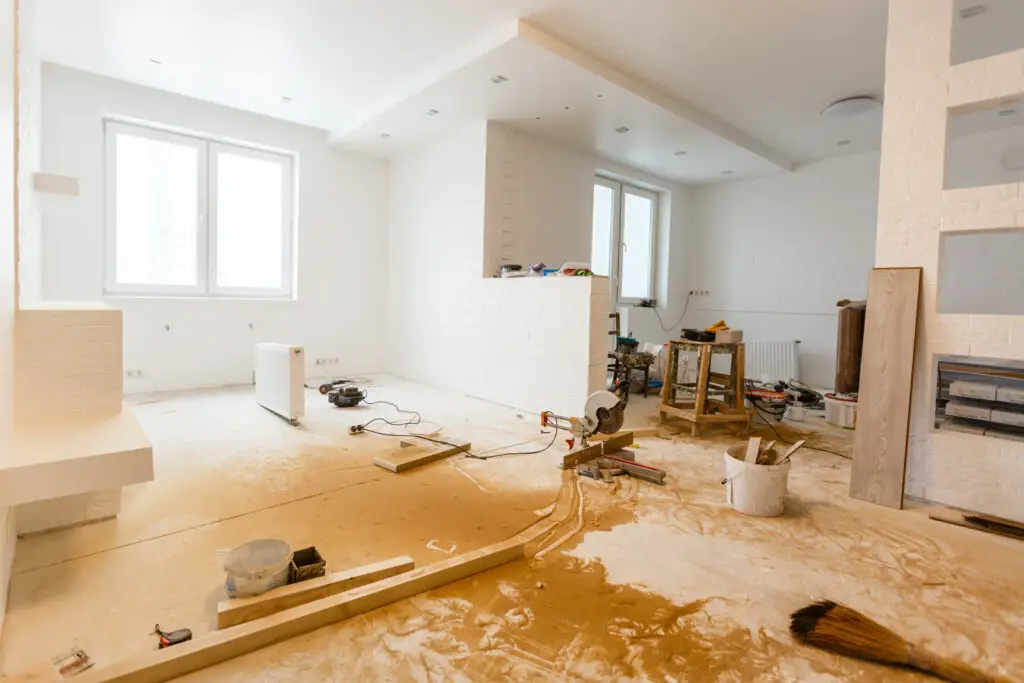Home renovations. They’re supposed to be a dream come true, right? Well, they can be a nightmare if you’re not careful. Sounds stressful, right?
Well, it doesn’t have to be. This article is your lifesaver, your roadmap to dodging those costly home remodeling mistakes.
Want the TL;DR version?
Here is a succinct list of remodeling mistakes to avoid (learned by my own hard-earned – and painful – experience):
- Overspending on specific parts of your home: All rooms aren’t created equal in the renovation world. Spending too much on less-significant areas like the laundry room can be a costly mistake.
- Underestimating the cost of kitchen and bathroom remodels: HGTV does not represent the real world. These are two of the most expensive areas to renovate. Failing to plan accordingly can lead to budget blowouts.
- Neglecting to consider the return on investment (ROI): Not all renovations add the same value to your home. It’s important to prioritize projects that will give you a solid return on your investment.
- Choosing the wrong contractor: Oh if I had this choice to make over again! Opting for the cheapest bid or not doing thorough research can lead to subpar work, delays, and additional costs down the line.
- Going cheap or too expensive on materials: Quality matters. Choosing cheap materials can lead to premature wear and tear, while overpriced materials may not provide the value you’re looking for.
- Overlooking other common mistakes: Things like not obtaining necessary permits, not having a contingency fund, and not getting detailed contractor quotes can lead to major problems down the road.
- Failing to manage stress and risks: Renovations can take a toll on your mental health. Not managing the emotional stress or the potential for conflict in your relationships can be a grave mistake.
- Not effectively planning ahead: Lack of proper planning can lead to a slew of issues, including time delays and cost overruns. It’s crucial to have a solid plan in place before embarking on a renovation project.
Ok, now for the details. Because for most of you, you still have questions, right?
After all, it’s better to learn from someone else’s mistakes (mine) than to repeat them yourself.
And I made a ton of them.
And they hurt: my soul and my wallet.
So if you’re still curious about:
- What about the most expensive part of a house remodel?
- What are the pitfalls of bathroom remodeling?
- How do you solve the dilemma of selecting the right contractor?
- And how do you even survive the emotional rollercoaster of a home renovation? All these questions and more will be answered.
Stick with me. By the end of this article, you’ll have the tools you need to tackle your remodel head-on, without breaking the bank (or losing your sanity!).
- Avoid Kitchen Overkill: High-end kitchen remodels, like waterfall countertops, can break your bank without adding equivalent value.
- Beware of the Bathroom Pitfall: Bathroom remodels, particularly when dealing with labor and materials, can swiftly escalate costs.
- Choose Your Contractor Wisely: The allure of the cheapest bid can be deceiving and lead to regret, make sure you hire a reputable company.
- Don’t Skimp on Materials: Picking the wrong materials (too cheap or too expensive) can either lead to quality issues or unnecessary expenses.
- Avoid Common Mistakes: Not getting necessary permits, not having a contingency fund, not paying attention to small costs, and not getting detailed contractor quotes can make your renovation a nightmare.
- Manage the Stress of Renovation: Remember, renovations can take an emotional toll – managing stress and maintaining good relationships throughout the process is key.
- Plan Ahead: Ensure you have a well-planned renovation process, prioritize projects, and understand the potential return on your investment.
Heads up! Before we get too far along here, if you want to connect with other homeowners and builders and get more great ideas for your home to make your space the best join my free private Facebook group, Remodel Reality here.
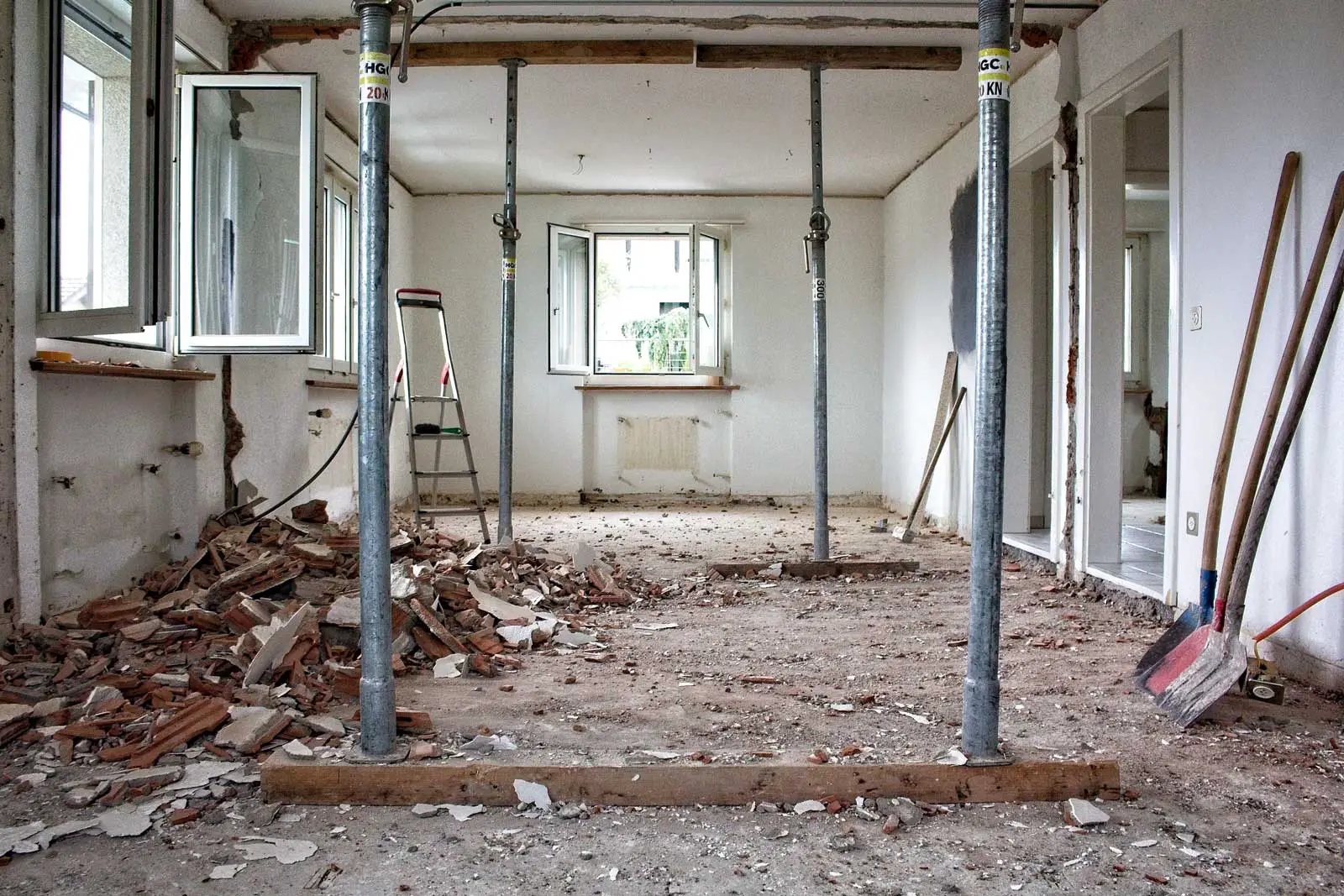
The Wallet Drainers: Discovering the Priciest Parts of a Home Remodel
In 2019, my mom suffered a stroke. Despite her initial resistance, both her doctor and I firmly believed that she could no longer live independently. She’s ok – it could have been far worse. But since she wasn’t going to be able to live by herself any longer, we needed to figure out a way to create a space for her so she could live with my family, but still maintain a sense of independence.
Enter our own remodel.
I wish I could say it went off without a hitch and we should’ve starred on an HGTV show about our glorious remodeling effort.
Nothing could be farther from the truth.
In reality, it was a nightmare – on a number of levels.
At this point, my mom has her space, and she’s happily and contentedly living with us now.
But it would be the world’s biggest understatement to say that it went easily.
It was profoundly frustrating and intrusive. Don’t worry – I’ll spare you the grim details of all that we went through.
But there are a ton of things I wish we’d have known before we started, and that’s what this post is about.
So, if you’re on the verge of embarking on a bold renovation adventure there are few things you should know. Just summoning the initial the courage need and drafting a loose plan isn’t even if you’re you’re chomping at the bit, ready to transform your humble abode.
Wouldn’t it be great if your wallet doesn’t turn into a money-sucking, inescapable black hole in the process? Let’s unravel the priciest parts of a home remodel and strategize on keeping those expenses in check.
The Heart of the Home: Kitchen Remodel
Welcome to the money pit: your kitchen. It’s the centerpiece, the hub, the… well, you get the picture. When you’re pouring money into a remodeling project, it’s like putting a second mortgage on this room. And why is that?
Materials and appliances. Stainless steel here, granite countertops there, and don’t even get me started on those custom cabinets. (I remember a time when we got an estimate on the cost of custom cabinets made me think I was paying for an artisan to hand carve each piece from a 200-year-old oak tree.)
During my own remodeling escapade, my kitchen remodel ended up being the equivalent of buying a new compact car. Yeah, you read that right. But it doesn’t have to be this way. Strategizing and planning can save you from the shock of a depleted bank account.
The Sanctuary: Bathroom Remodel
If the kitchen is the heart of the home, the bathroom is the oasis (or at least it should be).
Here’s the deal:
Bathroom remodels can cost almost as much as kitchens.
Why? Well, replacing a tub isn’t like swapping out an armchair. There’s plumbing, tiling, possibly even rerouting of pipes involved. And remember, these changes often involve a professional’s touch, meaning labor costs come into play.
In my experience, the master bathroom rework turned into a mini archaeological excavation. We discovered outdated piping that needed replacement (and trust me, the discovery was anything but exciting).
The Transformation: Basement Remodel
The basement: the final frontier of home renovation. It’s an opportunity to transform a typically under-utilized area into a purposeful, value-adding space. But beware, it’s a tricky beast.
In the realm of remodeling projects, converting a basement into a livable space is like prepping for a big race. It requires endurance (and a fat wallet).
The expenses?
They come from necessities like insulation, flooring, drywall, electrical wiring, and often, a complete overhaul of the layout – not to mention special provisions to prevent moisture penetration in some instances.
Remember, this isn’t about scaring you off from remodeling your home. It’s about preparing you for the reality of the costs involved and helping you strategize to get the most out of your investment as a homeowner. With thorough planning, savvy material choices, and a reliable team, you can avoid the financial pitfalls that catch many unwary renovators.
Being forewarned is being forearmed. Now, you’re ready to dive in, remodel smart, and make your home renovation dream a reality without emptying your bank account.

The Kitchen Chronicles: Sizzling Tips to Avoid Costly Remodeling Missteps
You’ve decided to take the plunge and give your kitchen a much-deserved makeover. There’s just one tiny problem – you’re worried about your budget ballooning faster than you can say ‘high-end kitchen remodel’. Fear not, my friend. Let’s break down the biggest kitchen remodeling mistakes and how to steer clear of them.
Gourmet Dreams: Navigating the High-End Kitchen Remodel
The allure of a high-end kitchen remodel can be powerful. Shiny, top-of-the-line appliances, marble countertops, custom cabinets – the whole nine yards. But here’s the kicker: high-end doesn’t always mean high value.
Just because something costs a fortune doesn’t mean it will add a comparable amount to your home’s value. (My neighbor, found that out the hard way. He’s now the proud owner of a very expensive smart fridge that can tell him the weather but didn’t do squat for his home’s appraisal.)
Instead, focus on upgrades that balance aesthetics, functionality, and affordability. A minor kitchen remodel can give you more bang for your buck, offering up serious ROI. So, step away from the gold-plated sink and choose wisely.
Avoiding the Waterfall: Rethinking Waterfall Countertops
Waterfall countertops can be a sight for sore eyes. But unless you’re absolutely sure you love them, they can be more like a waterfall draining your budget.
If you’re planning to sell your house in the future, remember that taste in countertops can be highly subjective and change quickly (just remember a few years back Corian countertops were all the rage). Your expensive waterfall countertop could end up being someone else’s design nightmare.
A friend of mine installed waterfall countertops as part of a major kitchen remodel. Two years later, he’s selling his house, and guess what a few potential buyers didn’t like? Yep, the waterfall countertops.
Instead, consider investing in quality, classic countertops that are more universally appealing. Keep the design clean, classy, and most importantly, within your budget.
Beware the Siren Call of Expensive Materials
It’s easy to get caught up in the allure of top-dollar materials for your kitchen remodel. But remember, expensive materials don’t necessarily mean longer-lasting or better.
Those who splurge on Italian marble that looks fantastic, just keep in mind what the maintenance is going to be for them. You’ll love them – but unless you’re in for the long haul that excitement may not last beyond the first week when you’ve spent an enormous amount of time cleaning up stains stains, worrying about chips, and the constant upkeep.
Not fun.
And for many, certainly not worth the hefty price tag.
Instead, opt for durable, lower-maintenance materials that still look great. Quartz countertops, for instance, can offer the same high-end look as marble but at a fraction of the cost and without the upkeep.
By avoiding these common kitchen remodeling mistakes, you’re one step closer to achieving your dream kitchen without the nightmare of an emptied savings account. Remember, remodeling isn’t about spending the most money, but about spending wisely and getting the most value. Your wallet – and your future self – will thank you.
In addition:
You really need to make sure that you order enough materials. Usually adding 10% to cover overage and loss is a good number to work with.
Think about it this way:
Say your house is 2000 square feet. If you order exactly 2000 square feet for your flooring material, that leaves you no room for managing cuts, accidents, etc. and you’ll need to end up ordering more. And in some cases that can be hard to do if it’s a limited or discontinued material, so make sure you have at least 10% more material than you need.
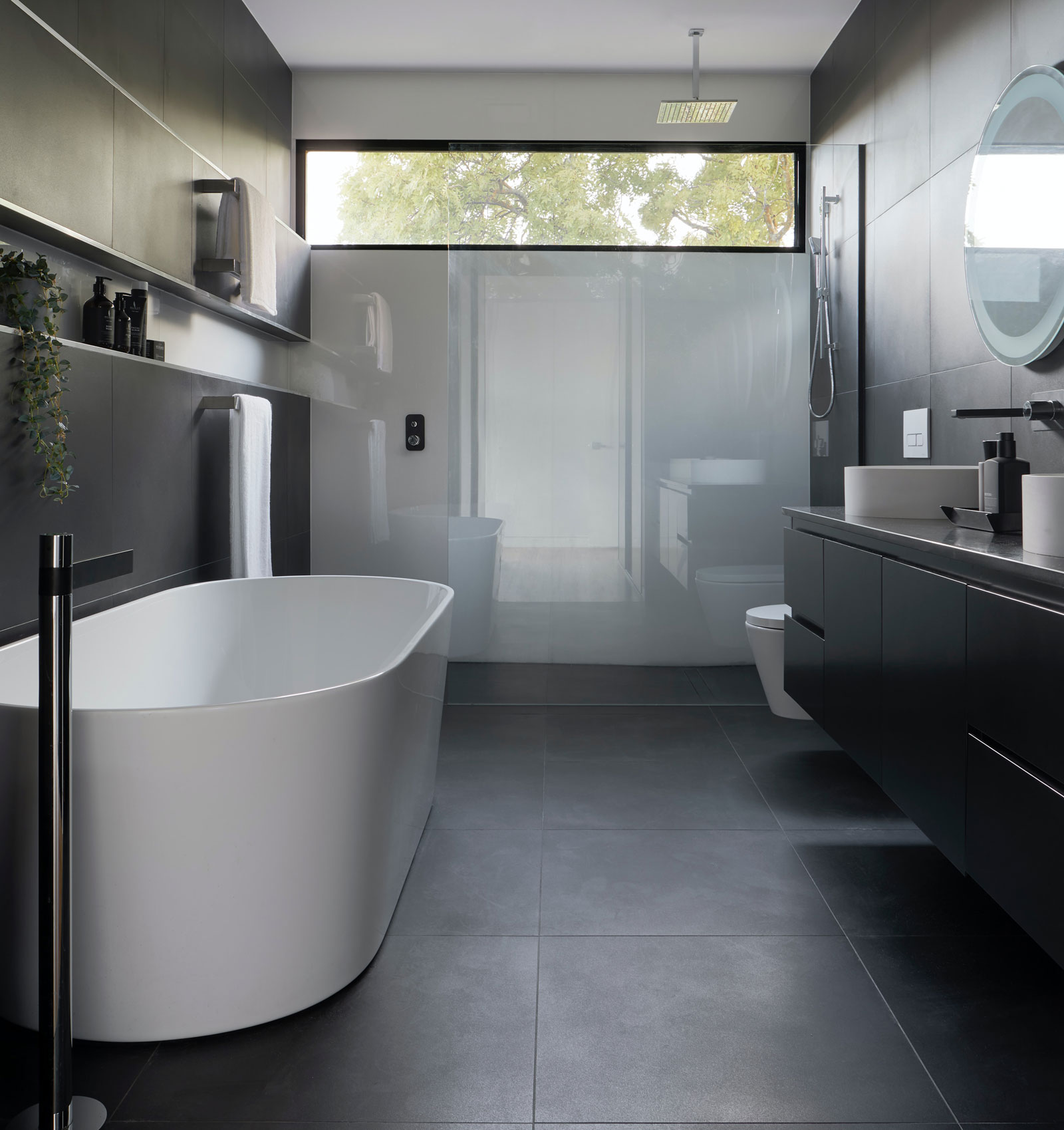
The Loo Lowdown: The Hidden Pitfalls of Bathroom Remodeling
You’ve set your sights on your next remodeling project: the bathroom. It might seem like a small area to tackle, but underestimating it can leave you high and dry. Let’s dive into the key mistakes you need to sidestep on your quest for the perfect privy.
The Money Pit: Don’t Underestimate Your Bathroom Remodel Investment
Renovating a bathroom might seem like a small task, but it can quickly balloon into a full-blown investment. It’s not just about picking out the prettiest tiles or the sleekest fixtures. Plumbing, waterproofing, labor – these costs add up, and fast.
You’re probably thinking, “It’s a small room. How expensive could it be?” (I’ve been there too.) But take it from me, a small space doesn’t equate to a small budget.
Remember: Good planning and realistic budgeting are your best friends when it comes to avoiding a bathroom remodel money pit.
Rushed Renovations: The Hidden Cost of Speedy Labor
We’ve all been there. You’re excited to get your project finished, and fast work seems like a good idea. But rushing renovations often leads to subpar work, and that can cost you down the line.
Ever heard the saying “more haste, less speed”? In remodeling, this couldn’t be more true. During my first bathroom renovation, I was eager to see the final result. I pushed my contractors to finish the job fast, and boy, did I regret it. Leaky pipes, uneven tiles, a wonky vanity – I had to redo almost everything. What seemed like a timesaver ended up costing me more time and money.
The biggest mistake I made with our remodel was using cheap labor and I learned this lesson the ultra hard way:
If you think it’s expensive to hire a professional to do the job, wait until you hire an amateur. — Red Adair
So, my advice? Be patient, take the time to do things right the first time, and avoid the hidden cost of cheap, hasty labor.
All That Glitters: The Expense of Over-the-Top Luxury
Just because it’s a bathroom doesn’t mean it can’t be luxurious, right? Heated floors, a rainfall showerhead, an oversized bathtub – it’s easy to get carried away with all the high-end options out there.
While these features can indeed add value to your home, they can also significantly inflate your remodeling costs. Balancing luxury with practicality is crucial.
Remember my buddy Steve from earlier? Well, he made the mistake of splurging on a digital shower system. He thought it’d be the pièce de résistance of his bathroom remodel. But when it broke down after a year, he realized the regular, non-digital showers worked just as well and were less of a headache to maintain.
Consider the cost-to-value ratio before deciding on luxury upgrades. You don’t want to be left with a fancy but functionally flawed bathroom.
Avoid these bathroom remodeling missteps, and you’ll be well on your way to a successful and cost-effective renovation. Don’t let the size fool you; the bathroom may be small, but the potential for mistakes is big. With careful planning, patience, and a healthy dose of realism, you’ll create a bathroom that’s not just beautiful, but also adds true value to your home.
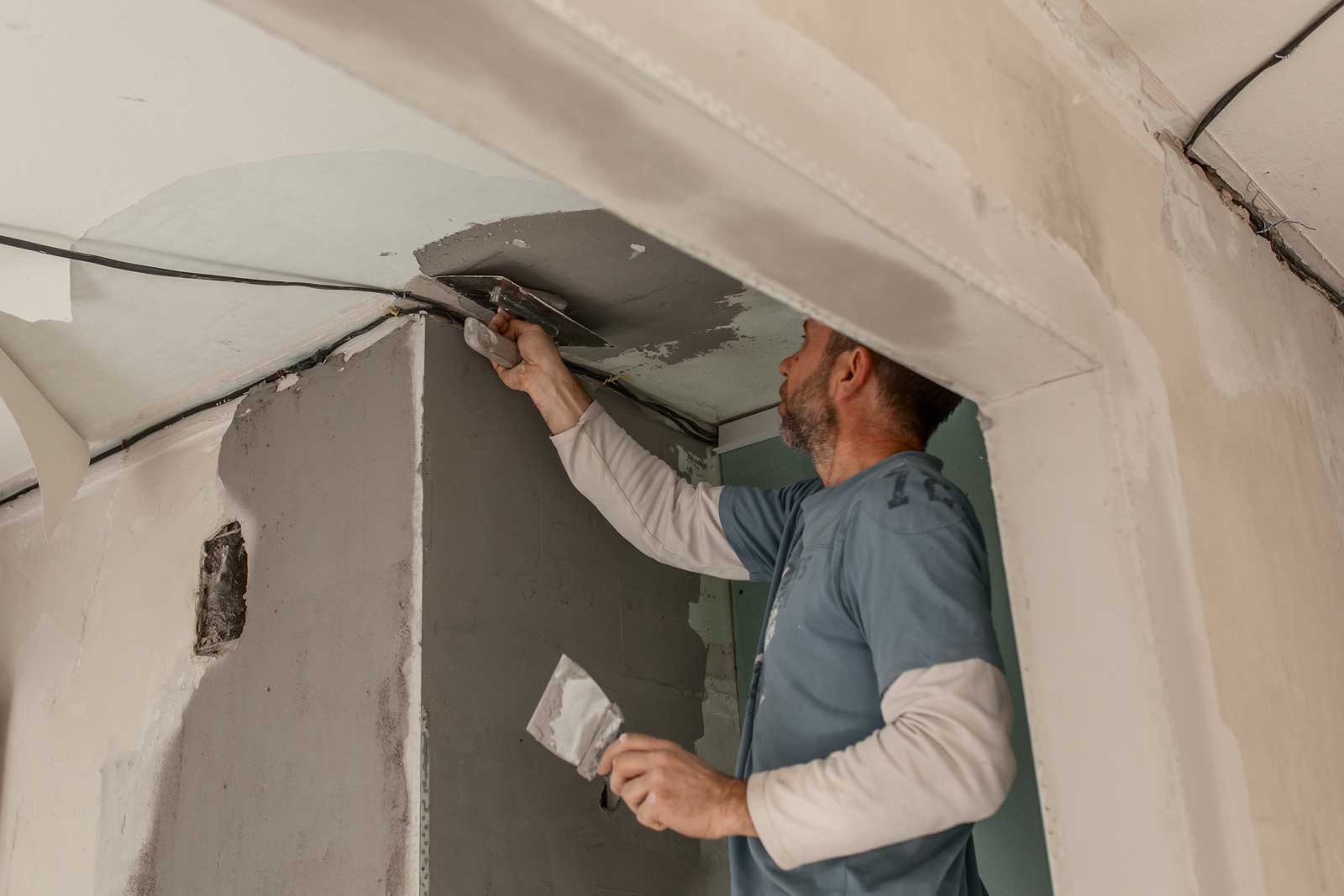
No Compromise on Quality: Navigating the Contractor Conundrum
You’ve drawn up your renovation plans, you’re excited about your vision, and you’re eager to see it come to life. But wait! Who’s going to wield the hammer and nails? Your choice of contractor can make or break your project. Here’s how to navigate the murky waters of contractor selection.
The Cheapest Bid Isn’t Always the Best Bid
When it comes to choosing a contractor, price isn’t everything. You might think you’re getting a bargain with the lowest bid, but more often than not, you get what you pay for. Cutting costs here could mean shoddy workmanship, cheap materials, or a job that drags on for months beyond the deadline.
Take it from me. When I started my first remodeling project, I jumped at the lowest bid. And guess what? I ended up paying almost double to fix the problems the “bargain” contractor left behind. Learn from my mistake: Don’t let the allure of saving a few bucks now cost you a fortune later.
The Importance of Reputation
When it comes to picking a contractor, reputation is key. Do your homework: Check reviews, ask for references, and look at previous projects. A reputable company will stand by their work and have a trail of satisfied customers to prove it.
Remember, you’re entrusting this team with your home and your hard-earned cash. You wouldn’t let just anyone have your car keys, right? (Well, unless you’re really trusting. In that case, can I borrow your car this weekend?)
Communication: The Make-or-Break Factor
The best contractor isn’t just skilled with tools; they’re also skilled at communication. Clear, transparent communication about costs, timelines, and expectations is crucial.
I once worked with a contractor who was an absolute wizard with a hammer. The problem? He couldn’t convey a clear timeline for the project to save his life. Days turned into weeks, weeks into months. The lesson? Even the most skilled craftsman can lead you astray without clear communication.
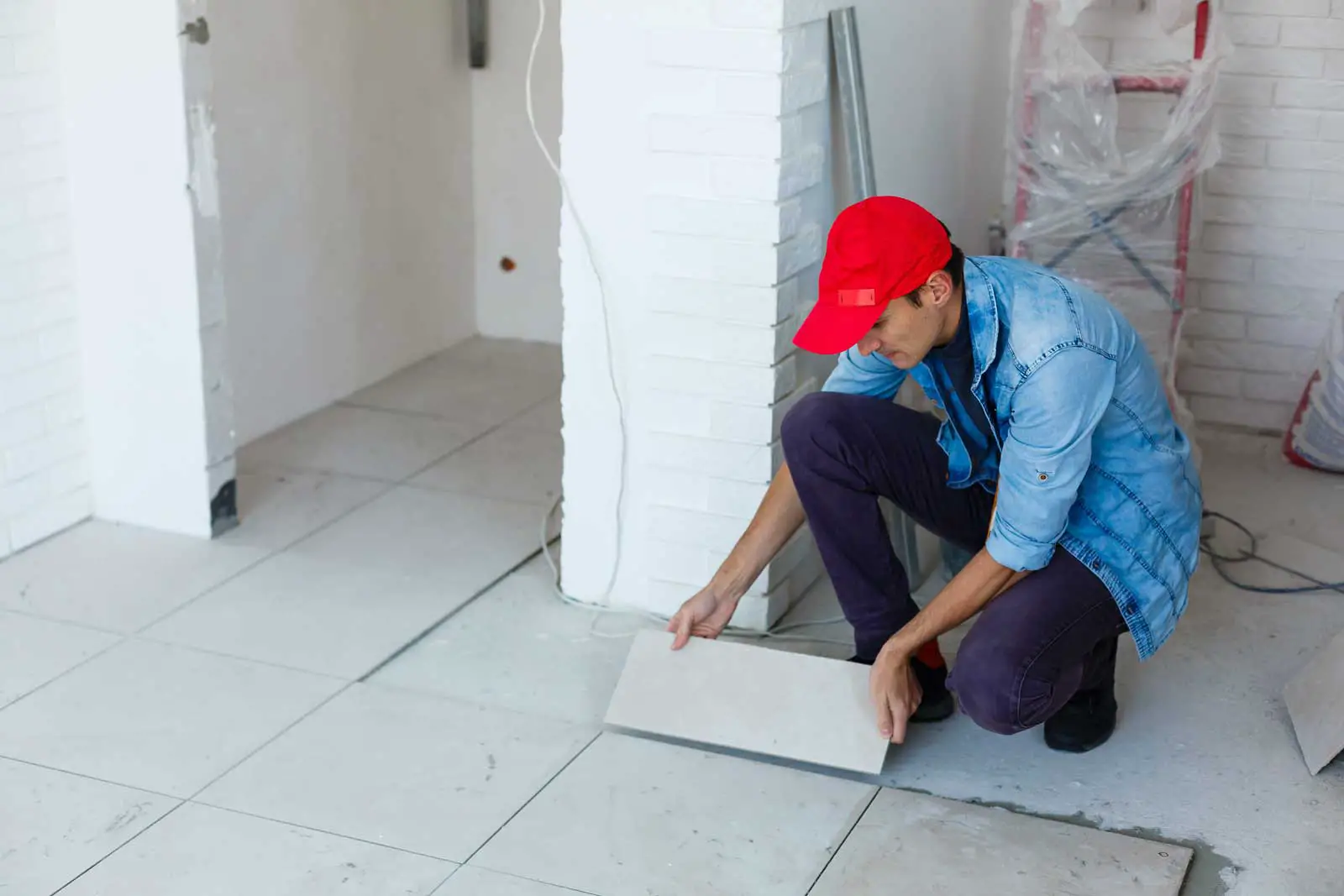
Goldilocks’ Guide to Materials: Not Too Cheap, Not Too Expensive, Just Right”
Imagine walking into your newly renovated home. The floors squeak, the cabinets don’t close right, and the wallpaper is already peeling. Nightmare, right? The materials you choose for your remodeling project can either realize your dream home or turn it into a disaster. Let’s talk about the Goldilocks principle and find the ‘just right’ balance.
Bargain Bin Blunders: The Risks of Going Too Cheap
When it comes to materials, the cheapest option isn’t always your best friend. In fact, it can be a wolf in sheep’s clothing, promising you savings but delivering headaches down the line. Skimping on materials might seem like a win for your wallet, but when the cheap laminate starts peeling, you’ll wish you had splurged on something more durable.
Let me tell you about a friend of mine. He decided to save money by choosing the cheapest paint he could find for his home renovation. It looked fine for the first few months. Then it started chipping…everywhere. He ended up paying twice: once for the cheap paint, and again for the quality stuff he should’ve chosen in the first place.
The lesson here? Cheap materials can cost you more in the long run.
The ‘Pricey Equals Quality’ Myth: Risks of Overspending
On the flip side, the most expensive materials aren’t always the best either. You might be tempted to equate price with quality, but that’s not always the case. You don’t always need to go for the gold-plated faucets or marble countertops to get a durable, stylish look.
In my experience, the best materials often lie in the middle of the price spectrum. They offer the perfect blend of durability, aesthetics, and value for money. Plus, you can invest the savings in other important areas of your renovation (like that reputable contractor we talked about earlier).
Striking the Perfect Balance: Quality and Affordability
Finding the ‘just right’ balance in material selection involves a bit of research. Look at reviews, consider the longevity and maintenance requirements of each material, and assess its value for money. Your goal should be to select materials that will stand the test of time, without draining your bank account.
By avoiding the extremes of too cheap or too expensive, you can find quality materials that fit just right with your budget and renovation goals. Trust me, you’ll sleep better at night, just like Goldilocks in the perfectly sized bed.
Watch Your Step: Navigating the Minefield of Common Remodeling Mistakes
Picture this: you’ve pulled the trigger on your remodeling project. You’ve got your budget, your materials, even your contractor. Everything’s going smoothly, right? Not so fast. Many homeowners make seemingly small mistakes that snowball into significant issues. Let’s take a closer look and help you navigate through this minefield.
The Permit Pitfall: Not Doing Your Homework
Don’t let your dream remodel turn into a legality nightmare. Sounds scary, right? It can be if you forget one critical step: obtaining the necessary permits. Yes, it might seem like a nuisance, and I get it, it’s not as exciting as choosing tiles or picking paint colors. But trust me, it’s just as important.
In my experience, nothing puts a damper on a remodeling project quite like a surprise visit from the building inspector (unless you’re into that sort of thing). Save yourself the hassle, do your homework, and get those permits.
The Cash Cushion Catastrophe: Forgetting a Contingency Fund
Next up on the mistake hit parade, let’s talk about the myth of the exact budget. So, you’ve calculated your costs down to the last cent, and you’re feeling pretty good, huh? Unfortunately, remodels have a sneaky way of going over budget. Unforeseen issues often pop up, like discovering your walls aren’t level or your electrical wiring needs an upgrade. These aren’t just headaches—they’re expensive headaches.
The solution? Set aside a contingency fund—typically 10-20% of your project cost. It’s like a safety net for your wallet. And hey, if you don’t use it, more money for the housewarming party.
The Devil in the Details: Overlooking Small Costs
Beware of the remodeling iceberg. What’s that, you ask? It’s when you only budget for the big, visible parts of the project (the iceberg’s tip), but neglect the smaller, hidden costs that lurk beneath the surface. Things like cabinet knobs, light switch covers, or even extra paint cans can add up, and if you’re not careful, you’ll find your budget sinking like the Titanic.
Quotation Quandaries: Not Getting Detailed Contractor Quotes
Finally, let’s talk quotes. No, not the motivational kind, the contractor kind. It’s easy to take a quote at face value, but a savvy homeowner digs deeper. Ask for a detailed quote that breaks down the costs of labor, materials, and any additional fees. Trust me, the last thing you want is to be halfway through your remodel and find out “miscellaneous” expenses amount to half your budget.

Hard Hats & Harmony: Navigating the Emotional Rollercoaster of Renovation
Remodeling a house is like running a little like marathon. You start with enthusiasm, hit some walls (sometimes literally), but keep pushing forward. This analogy doesn’t stop at physical exhaustion—it extends to mental fatigue as well. Let’s explore how to keep your sanity intact while living in a construction zone.
Keep Calm and Renovate On: Maintaining Relationship Health
Take it from me, the stress of a renovation can put a strain on any relationship. It’s not just about picking out paint colors and materials. It’s also about financial worries, dealing with delays, and living in a construction zone. And when you’re knee-deep in drywall dust, it’s easy to lose sight of the end goal and turn on each other.
It’s crucial to communicate clearly and regularly with your partner during a renovation. Set realistic expectations, divide responsibilities, and most importantly, remember why you’re doing this: to create a home you both love.
Under Construction: The Emotional Toll of a Remodel
Renovations can be a roller coaster ride of emotions. One day you’re over the moon about your new kitchen cabinets, the next you’re near tears because the bathroom tiles got delayed—again. Not to mention, living in a half-demolished house can feel like camping in the wilderness, but without the charming wildlife.
Keep a close eye on your emotional well-being during the renovation process. Make sure to take breaks, step outside the chaos, and engage in activities that bring you joy and relaxation. Your house might be under construction, but don’t let your happiness be a collateral damage.
The Silent Hammer: Understanding Depression and Stress in Renovation
Not to drop a bucket of cold water on your remodeling dreams, but we need to talk about the big D. Depression. It might sound strange, but it’s not uncommon for homeowners to experience depression during a renovation project. The constant noise, the dust, the feeling of invasion in your personal space—it can all lead to a serious case of the blues.
Ensure you have a solid support network in place to help you navigate these emotional pitfalls. If you find yourself feeling unusually low or overwhelmed, don’t hesitate to seek professional help. Remember, it’s not just about creating a beautiful space—it’s also about maintaining a healthy mindset.
In my experience, it’s not just the walls and floors that need attention during a renovation—it’s also your mental and emotional wellbeing. So while you’re choosing the perfect paint color or countertop, make sure to also carve out time for self-care and relationship maintenance. After all, a beautiful house isn’t much if its inhabitants aren’t happy.
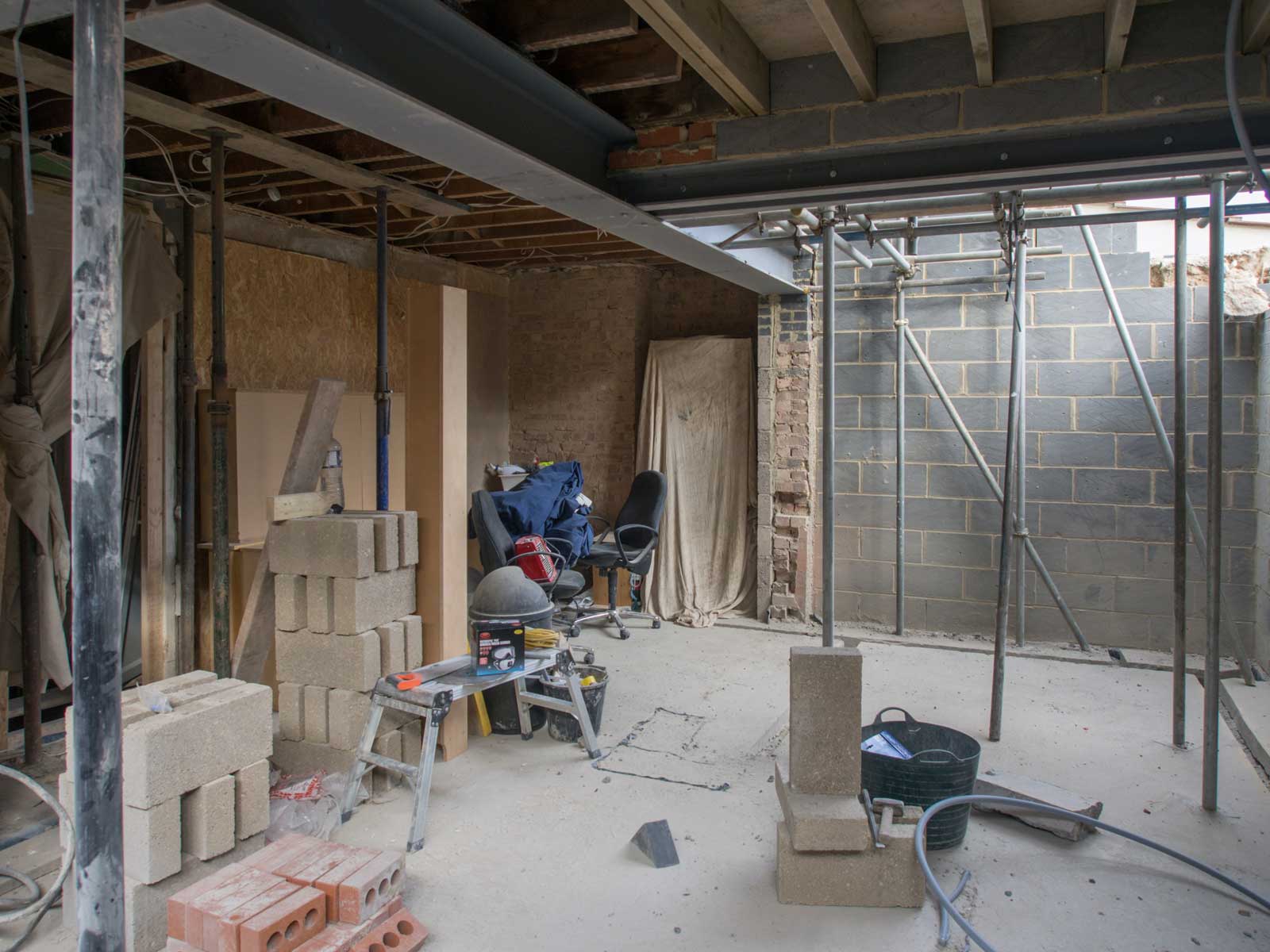
Planning Ahead: What to Consider Before Renovating
You’re at the start line, ready to dive into a home renovation project. The potential for a stunning transformation is just around the corner. But let’s hold onto that jackhammer, shall we? Before you rev up those power tools, there are some crucial things to consider. And guess what? It’s not just about what paint colors you fancy.
First and foremost, you’ve got to plan. But planning isn’t just about selecting your favorite tiles and fixtures. It’s about being smart with your time and money.
Prioritizing Projects: The Key to Efficient Renovation
Ever heard the phrase, “Don’t put the cart before the horse?” Well, in remodeling, it’s more like, “Don’t install the kitchen island before fixing the leaking roof.”
Yes, having a top-of-the-line chef’s kitchen is great, but not when it’s raining inside. So, before you jump on the high-gloss bandwagon, consider your priorities. Ask yourself: What needs to be done right now? What can wait?
For instance, if your roof is nearly 20 years old, replacing it may need to be your first order of business. Once you’ve tackled the necessities, you can move on to more fun projects.
In my experience, good planning is akin to laying a solid foundation for a building. It can mean the difference between a renovation project that’s a thrilling journey and one that’s a never-ending nightmare.
Determining the Return on Investment: Don’t Pour Money Down the Drain
Your home is an investment. In fact, it’s probably the biggest one you’ll ever make. So, wouldn’t you want to make sure you get a good return?
Here’s the thing. Not all upgrades are created equal. Some improvements pay off; others, not so much.
Let’s say you’re dreaming of installing a sauna in your basement. Sounds like the perfect relaxation spot, right? But, if you’re thinking about selling your home in the future, a sauna might not pay off as much as you’d hope. Potential buyers may see it as a maintenance headache rather than a luxurious bonus.
On the other hand, something like a minor kitchen remodel can offer a substantial return on investment. So, consider whether your project will add value to your home in the long run.
Being strategic about where you invest your renovation dollars can significantly impact your property’s value.
Establishing a Renovation Budget: Make Your Wallet Happy
Don’t let renovation costs sneak up on you like a horror movie jump-scare. Define your budget before the first hammer swing.
Let’s face it; it’s easy to get carried away. That custom cabinetry or the vintage clawfoot tub might look enticing, but it’s essential to know what you can realistically afford.
One rule of thumb is to budget for more than you anticipate. You know, for those “surprise” expenses (like discovering ancient plumbing when you open a wall).
Remember, being a homeowner means dealing with unexpected issues. But, a well-planned renovation budget can help take the sting out of those surprises.
So, before jumping into a remodeling project, take a step back and plan. Remember to prioritize projects, determine potential return on investment, and establish a robust budget. Doing so won’t just save your wallet; it could save your sanity too. It’s all about turning your house into a home you love, without the stress. Now, isn’t that a blueprint for success?
Related & Frequently Asked Questions
So, you’re still kicking around ideas about your renovation project and a ton of questions are popping up, right? Well, you’re not alone. We’ve got a handy FAQ section up next that answers some of the most burning questions about renovations – the kind that keep homeowners up at night! Buckle up and let’s dive right in.
Q: What should you renovate first in a house?
A: Prioritize spaces that see the most usage and will give the best return on your investment. Often, this means starting with the kitchen or bathrooms, as these are the areas that buyers typically look at first.
Q: Is remodeling a house cheaper than building?
A: Remodeling can be cheaper than building new, but it’s not a hard and fast rule. It depends on the current condition of the house, the extent of the remodeling needed, and your local market conditions.
Q: How can I reduce the cost of kitchen cabinets?
A: There are several ways to save money on kitchen cabinets. You can consider refacing existing cabinets, shopping for discounted models, or even opting for open shelving as a trendy and cost-effective alternative.
Q: How do you control costs in construction?
A: Sticking to a detailed plan, choosing the right contractor, and selecting materials wisely can help control costs. Also, it’s crucial to have a contingency fund for any unexpected expenses that might crop up.
Q: What is the most expensive material in construction?
A: Some of the priciest materials in construction can be natural stones like marble, high-end wood varieties, or certain metals like copper. However, the cost also depends on the quantity needed and the market availability.
Q: Should I clean house before renovation?
A: Yes, it’s a good idea to clean and declutter before a renovation. It gives the contractors a clean slate to work on and can prevent your belongings from getting dusty or damaged.
Q: What renovations are worth doing?
A: Renovations that increase the functionality and aesthetic appeal of your home are typically worth doing. This might include upgrading your kitchen or bathroom, enhancing your home’s curb appeal, or improving your home’s energy efficiency. The “worth” of a renovation can also be measured by its return on investment if you plan to sell your home.
